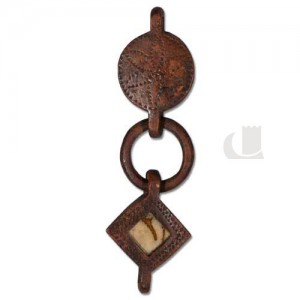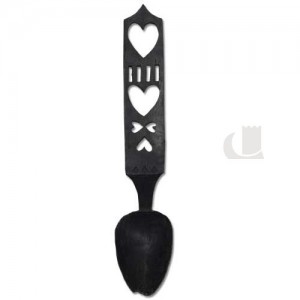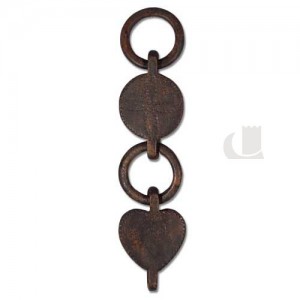It was customary, between the seventeenth and nineteenth centuries in Wales, for a man who was courting a woman to carve a wooden love spoon for her. Early examples, dating from the eighteenth century, were copies of the metal spoons used by the wealthy landowners.
As the tradition evolved, young men carved ever more elaborate designs into the spoon handles. The intricacy of the designs demonstrated not only the skill of the carver but also the strength of his love. As with many customs the original utilitarian use has been superseded, until today love spoons serve a purely decorative purpose
This love spoon is one of a number given to the Royal Institution of South Wales (Swansea Museum) by Colonel William E. Ll. Morgan.
 The design of this fragment includes the elements of a chain link denoting captured love and also the flower, symbolic of courtship.
The design of this fragment includes the elements of a chain link denoting captured love and also the flower, symbolic of courtship.
 This design of single and double hearts not only begs the question – ‘may I court you ?’ but also demonstrates a shared love.
This design of single and double hearts not only begs the question – ‘may I court you ?’ but also demonstrates a shared love.
 This handle fragment is made up of three elements, chain links denoting captured love, the flower signifying courtship and the single heart questioning the possibility of courtship.
This handle fragment is made up of three elements, chain links denoting captured love, the flower signifying courtship and the single heart questioning the possibility of courtship.

